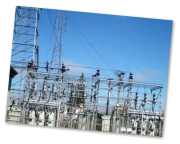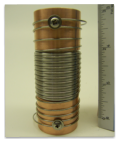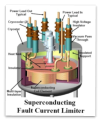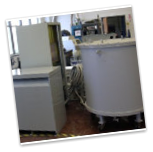







Fault Current Limiters
Hyper Tech's proprietary technology will enable production of a
low cost, scalable solution for integrating power generators with
the electric grid.

© Hyper Tech Research, Inc. 2014
MgB2 Fault Current Limiters
A superconducting FCL is a device that uses superconductors to
instantly limit electrical surges before they reach a circuit breaker.
Conventional utility equipment that currently mitigates this
problem consists of large copper coils called line reactors. These
are bulky devices that continuously consume power.
Superconductors alone possess the unique physical properties
that allow them to react instantly to current changes. In their
superconducting state, they pass electricity continuously without
power losses at normal levels while limiting current surges. The
main advantages of superconducting FCLs are their fast response
to over-current conditions, response without an external trigger,
and negligible influence on an electrical network under normal
operating conditions.
There are several types of superconducting FCLs but they fall into
two basic categories: resistive and inductive. A resistive
superconducting FCL operates as described above. They are
intended to be passive and have a recovery time dependent
entirely on the selected method of cooling. If the fault energy is
stored inertially in a heat sink, the recovery time will be long, on
the order of minutes, as determined by the mass of the
components. An inductive superconducting FCL is designed to
remain superconducting and stores the fault energy within the
coils of the superconductor while providing the necessary
impedance to limit the fault current. The inductive
superconducting FCL is not usually preferred because of its
greater size and cost, which are driven by the large volume of
superconductor required.


















